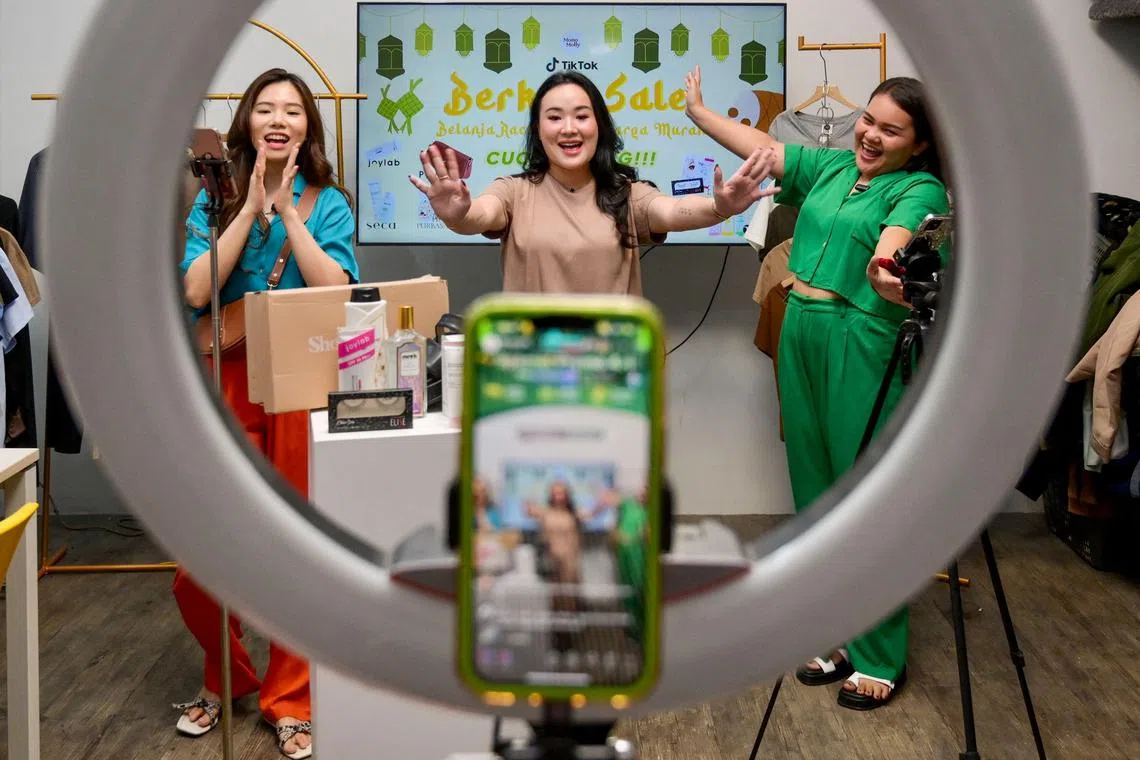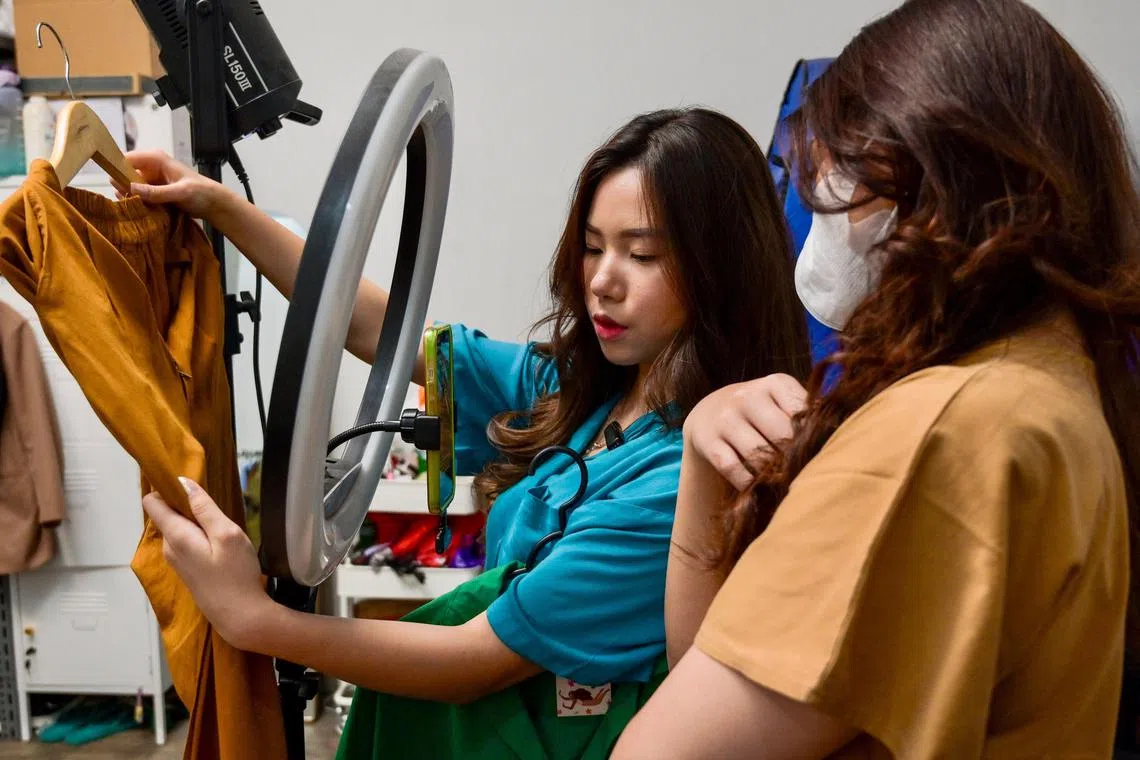Indonesia’s entrepreneurs cash in on TikTok live selling spree
Sign up now: Get ST's newsletters delivered to your inbox

Ms Christine Febriyanti's (centre) online retail employer has reported a 30 per cent increase in revenue since kicking off a TikTok live-stream drive.
PHOTO: AFP
Follow topic:
JAKARTA - Indonesian live-streamer Christine Febriyanti stood in a room crammed with clothes in Jakarta, hawking colourful garments to hundreds of viewers on a TikTok live stream for a local fashion brand.
“For the Vitamin C kind of girls, you’ll fulfil all of your nutrient needs with these orange pants,” the 25-year-old shared during the sales session.
Her pitch is part of a clamour for TikTok shopping in Indonesia, where users spent more money on the app than users anywhere else in South-east Asia did over the past year.
The region is a bright spot for TikTok – owned by Chinese tech firm ByteDance – following months of intense scrutiny in the United States and other nations over users’ data security and the company’s alleged ties to Beijing.
TikTok chief executive Chew Shou Zi announced plans last week to invest billions of dollars in South-east Asia,
As TikTok Shop grows in popularity, with Indonesians buying more than a third of goods sold in South-east Asia over the past year, entrepreneurs are flocking to the platform to promote a range of tech, fashion and homemade products.
They are drawn to TikTok’s e-commerce features that allow them to sell through live streams or open online stores.
Ms Febriyanti’s 20-strong online retail employer Monomolly has reported a 30 per cent increase in revenue since kicking off a TikTok live-stream drive in 2022, according to spokesman Nadya Paramitha.
The platform’s algorithm has jumpstarted the company’s business, according to employees.
It has allowed sellers to “reach new markets randomly” instead of relying on interest-based search results on rival apps, said TikTok sales manager Chelvyana Onggo Winata.
Cookies and entertainment
It is not just companies that are using the platform.
DIY home streamers Panji Made Agung and his wife Astari Gita used to rely on their families to survive.
But they now sell as many as 1,000 cookie jars a month through TikTok live streams, making 25 million rupiah (S$2,250).
Their viewers and sales surged because of their personalities, said Ms Gita, who often flirts with her husband and makes him feel uncomfortable on camera.
“We discovered selling products alone would not work. It has to touch people’s emotions. It has to be entertaining,” Ms Gita said.
“They like our real-life humour as a couple and Agung being awkward.”

Employees offering merchandise for sale through a TikTok live stream in Jakarta.
PHOTO: AFP
TikTok Shop has capitalised on the Indonesian market, amassing more than two million sellers since it was launched in 2021.
It takes 1 per cent commission and a charge of 20,000 rupiah for every item sold, building a growing market share against more established and bigger rivals.
Indonesia represented 42 per cent of TikTok’s US$4.4 billion (S$5.95 billion) regional gross merchandise value in 2022, according to Singapore-based consultancy Momentum Works.
‘Virtual conversation’
Online shopper Aldi Alfarabi said he was not looking to spend money while scrolling through TikTok live streams, but he often stumbled on items that took his fancy, such as a dinosaur backpack he recently bought.
“There is an engaging interaction through the virtual conversation,” said the 29-year-old from Jakarta.
“You can see exactly what you are buying.”
Experts say TikTok’s Indonesian strategy is catching on amid shifting shopping habits as younger customers demand more engaging experiences to open their wallets.
“Indonesia’s digital market is dominated by Generation Z,” said Mr Bhima Yudhistira, an analyst from Jakarta’s Centre of Economic and Law Studies.
“As they are more adaptive to new things, the market patterns change swiftly.”
So South-east Asian online shopping – pulled along by Indonesia – is only going one way, he said, growing into what is predicted to become a US$35 billion market in 2024.
That is only good news for sellers like Mr Agung and Ms Gita.
“We asked our family to stop helping us. Now, we can buy food and diapers for our child with our own money,” said Ms Gita.
“We can also have fun a little bit.” AFP

